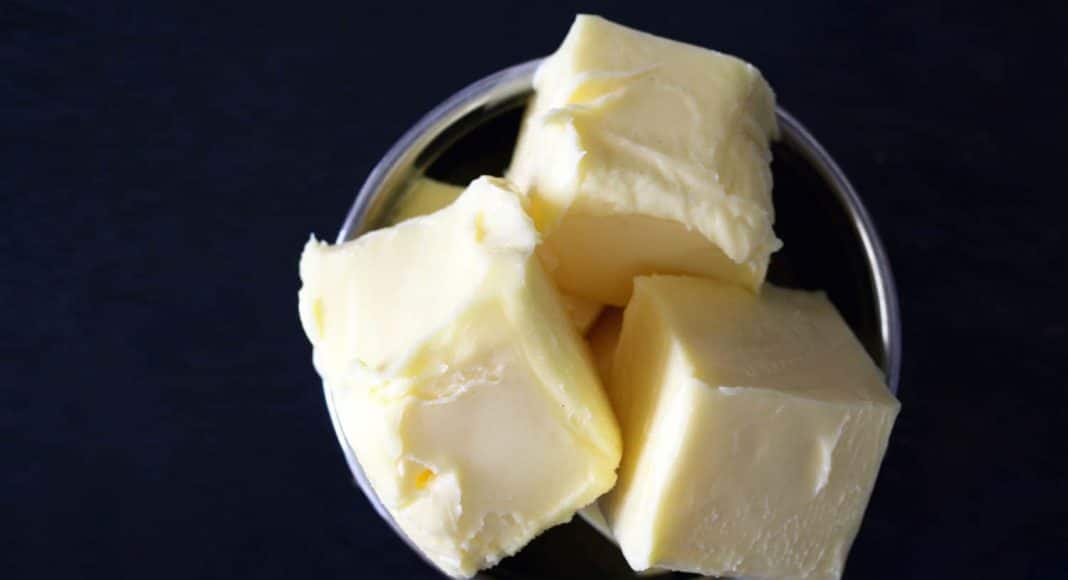No edibles to be found? If you have bud and butter, then you can make a cannabis-infused butter with which to medicate you own food. Cannabutter is one of the simplest, most common ways, to make weed-infused treats. Here’s how to make a batch of butter and dose your baking without totally baking your friends.
Decarboxylating Marijuana for Cannabutter
In order to activate its psychoactive potential, the flower must be heated slowly at a low temperature, a process called decarboxylation, before infusing the butter.
- Spread 1/2 oz of dry, broken up marijuana flower onto a baking sheet.
- Bake at 240 degrees for 40 minutes.
- Add 1 cup of butter to 2 1/2 cups of water in a saucepan. Induction will keep the heat steadier than a gas range; either will work, one just takes some extra attention.
- When the butter liquifies, break up the decarbed bud and stir it into the butter and water.
- Let the mixture simmer on low heat for 2-3 hours, stirring occasionally and never letting it come to a full boil. Use a candy thermometer to help regulate the temperature.
- Pour the liquid and plant material through a metal sieve, lined with cheesecloth over a container that will catch the medicated butter. Do not squeeze the cheesecloth or it may push more bad-tasting plant material through
- Refrigerate for at least 3 hours or until the butter has hardened all the way through. The separated butter will form a solid puck above the water.
Some recipes may suggest cutting out the oven step and decarbing cannabis in the hot butter directly. If you don’t have an oven or toaster oven, the direct infusion method can work but because butter has a low smoke point, it’s the fat least recommended for this kind of infusion. At best, you end up with overwhelmingly grassy-tasting butter and at worst the butter burns. For this reason, we recommend decarbing in the oven first.
Cooking with Cannabis Without Baking the Guests
Homemade edibles are a challenge to accurately infuse and dose.
Because of the amount of time required to fully extract cannabinoids from the plant material, damage to primary drug—THC, CBD and various terpenes—is typical.
Large-scale producers of edibles generally test at multiple stages of the process. First, they test the marijuana flowers being used, which helps the manufacturer estimate of how much of each cannabinoid and terpene is available for extraction from the flower. Secondly, testing of the final extract occurs. Finally, testing of the spent plant matter post-extraction confirms what cannabinoids and terpenoids were left behind and from that we can get how many made it into the final product. Home bakers, unfortunately, lack these resources but cannabis tech keeps getting better each day, so we’re sure to see working models of home testing equipment soon.
The potency of your cannabutter will depend on many factors, from the potency of the starting material to the length of time the butter spent infusing. Test the potency of your finished product by spreading ¼ or ½ teaspoon on toast and see how that dose affects you over the following two hours. Use the information you gather as a baseline for your recipes.
Butter is a delicious and versatile carrier for THC and other cannabinoids, although it isn’t the only one. You can also use coconut oil, olive oil, or any other fatty oil for your infusions. Butter has the lowest burning point and is the least forgiving, so keep a close eye on it but if you get this right you’ll be an edibles star on the rest of the fatty mediums.


